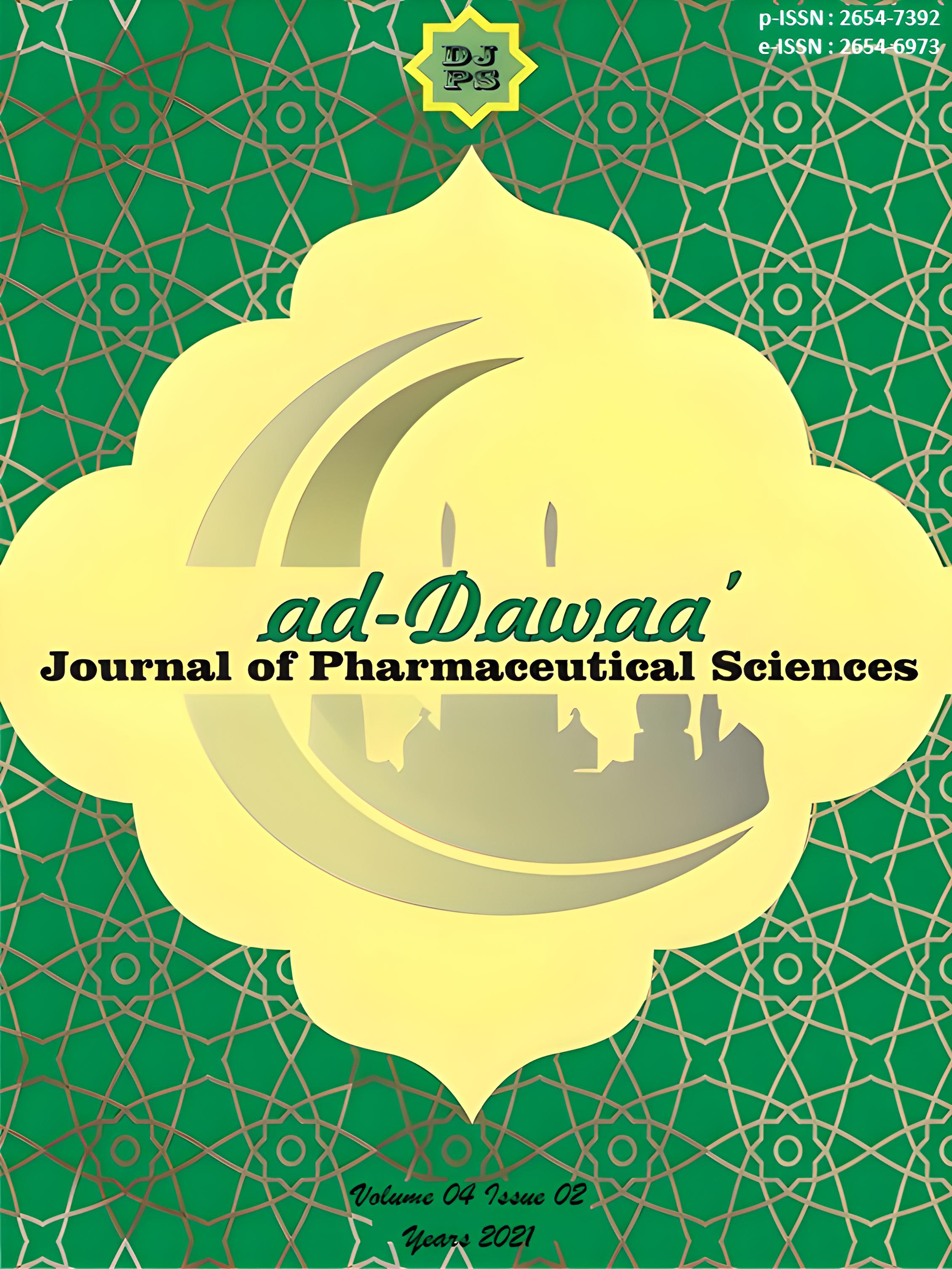ATR-FTIR Method for Detection of Cassava Impurities in Indonesian Commercial White Pepper (Piper nigrum L.) Based on Principal Component Analysis
Abstract
White pepper (Piper nigrum L.) is one of the most popular flavourings targeted for adulteration, i.e., cassava, resulting in quality loss and infringement on consumer rights and interests. Because it is easy and quick cleanup, minimal sample preparation, and excellent performance with strongly or thickly absorbed samples, the Attenuated Total Reflection-Fourier Transform Infrared Spectroscopy (ATR-FTIR) spectrum signal is widely used to measure commercial herbal products. Manipulation of the spectrum signal can be used to quantify a sample as well as reduce its dimensionality. As a result, there is a lot of interest in developing methods for detecting cassava in commercial white pepper (Piper nigrum L.). The aim of the research was to get an ATR-FTIR spectroscopic technique combined with chemometrics to detect cassava as an adulterant in commercial white pepper (Piper nigrum L.). The chemical profiles of white pepper (Piper nigrum L.) and cassava were compared using principal component analysis (PCA). Bangka, Sudu, and Pontianak were used to collect white pepper (Piper nigrum L.) and cassava. White pepper (Piper nigrum L.) and cassava were macerated in 96 percent ethanol for 3×24 hours before being concentrated with a rotary evaporator until thick. Each extract's IR spectral was measured using ATR-FTIR spectroscopy in the 4000-650 cm-1range. In addition, the IR spectral was clustered using PCA in the R program. To obtain the appropriate PCA model, we applied two IR spectral manipulation procedures (normal and derivative IR spectra) of the pure material. The PCA chosen was of the normal IR spectral type, with PC1 and PC2 values of 82.3 percent and 7.5 percent, respectively.. The projection of three commercial samples from the markets revealed that samples A and B were negative for cassava adulterant, while Sample C was suspected to be positive. Finally, the ATR-FTIR spectroscopic method tandem PCA was successful in clustering the presence or absence of cassava content in the commercial of Indonesian White PepperDownloads
References
Andrade, D. F., Guedes, W. N., & Pereira, F. M. V. (2018). Detection of chemical elements related to impurities leached from raw sugarcane: use of laser-induced breakdown spectroscopy (LIBS) and chemometrics. Microchemical Journal, 137, 443–448.
Bhattacharjee, P., Singhal, R. S., & Gholap, A. S. (2003). Supercritical carbon dioxide extraction for identification of adulteration of black pepper with papaya seeds. Journal of the Science of Food and Agriculture, 83(8), 783–786.
Dhanya, K., Syamkumar, S., & Sasikumar, B. (2009). Development and application of SCAR marker for the detection of papaya seed adulteration in traded black pepper powder. Food Biotechnology, 23(2), 97–106.
Dissanayake, D., Herath, H., Dissanayake, M., Chamikara, M. D. M., Jayakody, M. M., Amarasekara, S. S. C., Kularathna, K., Karannagoda, N. N. H., Ishan, M., & Sooriyapathirana, S. (2016). The length polymorphism of the locus psbA-trnH is idyllic to detect the adulterations of black pepper with papaya seeds and chili.
Glassford, S. E., Byrne, B., & Kazarian, S. G. (2013). Recent applications of ATR FTIR spectroscopy and imaging to proteins. Biochimica et Biophysica Acta (BBA)-Proteins and Proteomics, 1834(12), 2849–2858.
Husson, F., Lê, S., & Pagès, J. (2011). Exploratory multivariate analysis by example using R (Vol. 15). CRC press Boca Raton.
Jolliffe, I. T. (2002). Springer series in statistics. Principal Component Analysis, 29.
Kassambara, A. (2017). Practical guide to cluster analysis in R: Unsupervised machine learning (Vol. 1). Sthda.
Lai, L., Fu, Q., Liu, Y., Jiang, K., Guo, Q., Chen, Q., Yan, B., Wang, Q., & Shen, J. (2012). Piperine suppresses tumor growth and metastasis in vitro and in vivo in a 4T1 murine breast cancer model. Acta Pharmacologica Sinica, 33(4), 523–530.
Leite, A. L. M. P., Zanon, C. D., & Menegalli, F. C. (2017). Isolation and characterization of cellulose nanofibers from cassava root bagasse and peelings. Carbohydrate Polymers, 157, 962–970.
Li, X., Lu, R., Wang, Z., Wang, P., Zhang, L., & Jia, P. (2018). Detection of corn and whole wheat adulteration in white pepper powder by near infrared spectroscopy. Am. J. Food Sci. Technol, 6(3), 114–117.
Rahmah, M. (2017). The protection of agricultural products under geographical indication: An alternative tool for agricultural development in Indonesia.
Sunila, E. S., & Kuttan, G. (2004). Immunomodulatory and antitumor activity of Piper longum Linn. and piperine. Journal of Ethnopharmacology, 90(2–3), 339–346.
Supriana, T., & Yanti, C. W. (2013). Prospect of Indonesia black and white peppers export. Economic Journal of Emerging Markets, 5(1), 1–14.
Yin-Fu, B. A. I., & Hong, X. U. (2000). Protective action of piperine against experimental gastric ulcer. Zhongguo Yao Li Xue Bao= Acta Pharmacologica Sinica, 21(4), 357–359.
Yuliantini, A., Salafiah, F., & Asnawi, A. (2020). Rapid Detection Of Ashitaba (Angelica Keiskei) Herbal Medicine Adulteration Using FTIR And Principal Component Analysis Method. Rasayan J Chem, 13(1), 535–540.
Once an article was published in the journal, the author(s) are:
- granted to the journal right licensed under Creative Commons License Attribution that allows others to share the work with an acknowledgement of the work's authorship.
- permitted to publish their work online in third parties as it can lead to wider dissemination of the work.
- continue to be the copyright owner and allow the journal to publish the article with the CC BY-SA license
- receiving a DOI (Digital Object Identifier) of the work.


1.png)